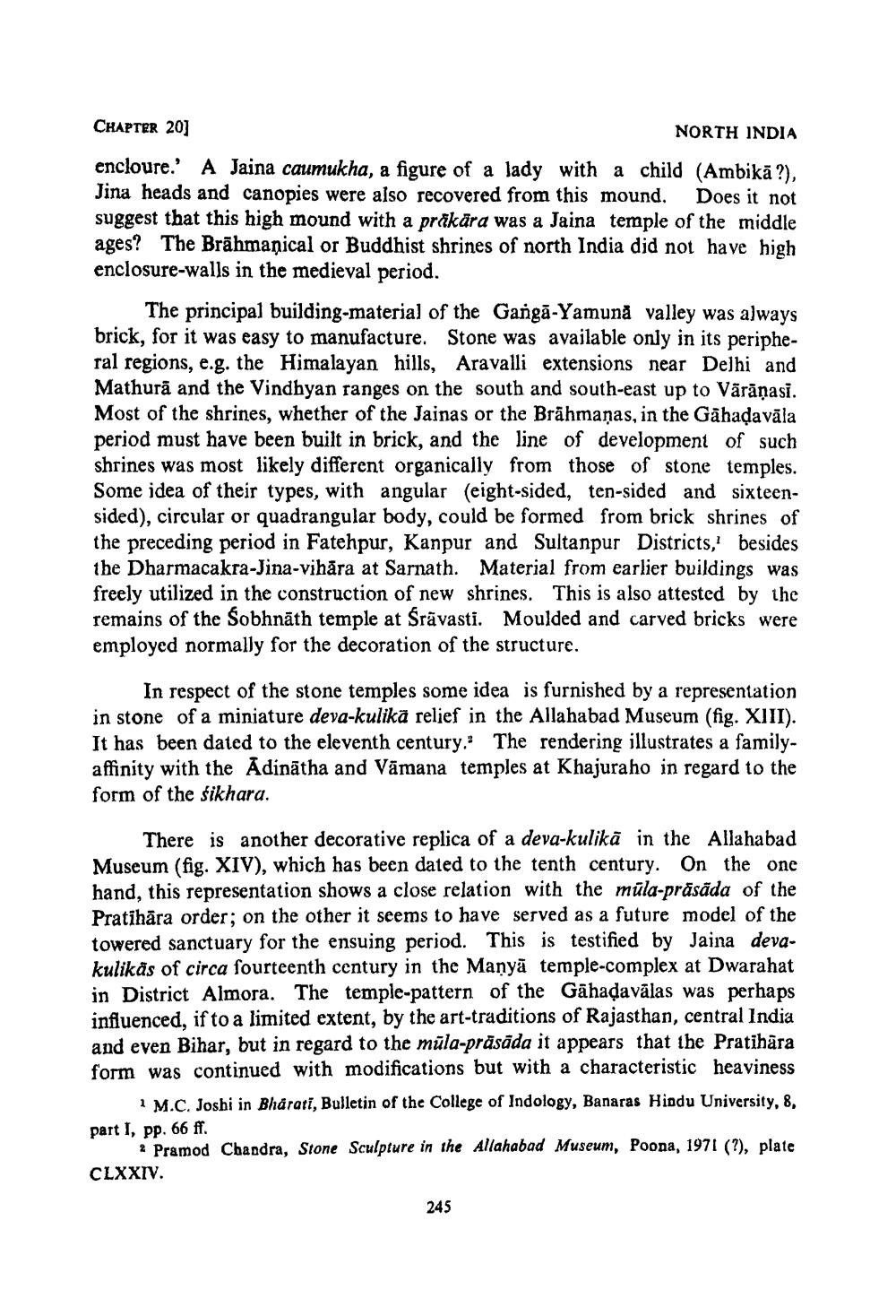________________
CHAPTER 20]
NORTH INDIA
encloure.' A Jaina caumukha, a figure of a lady with a child (Ambikā?), Jina heads and canopies were also recovered from this mound. Does it not suggest that this high mound with a prikāra was a Jaina temple of the middle ages? The Brāhmanical or Buddhist shrines of north India did not have high enclosure-walls in the medieval period.
The principal building-material of the Gangā-Yamuna valley was always brick, for it was easy to manufacture. Stone was available only in its peripheral regions, e.g. the Himalayan hills, Aravalli extensions near Delhi and Mathurā and the Vindhyan ranges on the south and south-east up to Vārānasi. Most of the shrines, whether of the Jainas or the Brāhmaṇas, in the Gahadavāla period must have been built in brick, and the line of development of such shrines was most likely different organically from those of stone temples. Some idea of their types, with angular (eight-sided, ten-sided and sixteensided), circular or quadrangular body, could be formed from brick shrines of the preceding period in Fatehpur, Kanpur and Sultanpur Districts, besides the Dharmacakra-Jina-vihāra at Sarnath. Material from earlier buildings was freely utilized in the construction of new shrines. This is also attested by the remains of the Sobhnāth temple at Srāvasti. Moulded and carved bricks were employed normally for the decoration of the structure.
In respect of the stone temples some idea is furnished by a representation in stone of a miniature deva-kulikā relief in the Allahabad Museum (fig. XIII). It has been dated to the eleventh century. The rendering illustrates a familyaffinity with the Ādinātha and Vāmana temples at Khajuraho in regard to the form of the sikhara.
There is another decorative replica of a deva-kulikā in the Allahabad Museum (fig. XIV), which has been dated to the tenth century. On the one hand, this representation shows a close relation with the mula-prāsāda of the Pratihāra order; on the other it seems to have served as a future model of the towered sanctuary for the ensuing period. This is testified by Jaina devakulikās of circa fourteenth century in the Manyä temple-complex at Dwarahat in District Almora. The temple-pattern of the Gahadavālas was perhaps influenced, if to a limited extent, by the art-traditions of Rajasthan, central India and even Bihar, but in regard to the mūla-präsāda it appears that the Pratihāra form was continued with modifications but with a characteristic heaviness
M.C. Joshi in Bharati, Bulletin of the College of Indology, Banaras Hindu University, 8, part I, pp. 66 ff.
Pramod Chandra, Stone Sculpture in the Allahabad Museum, Poona, 1971 (?), plate CLXXIV.
245




